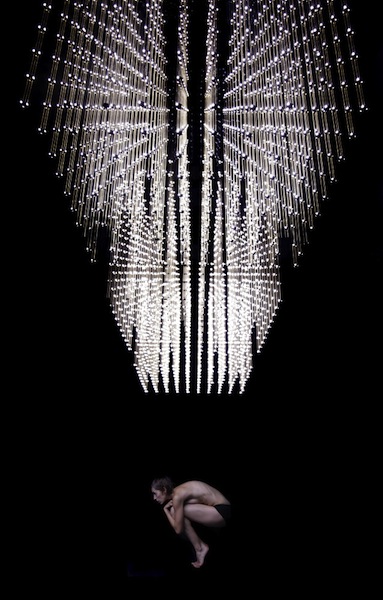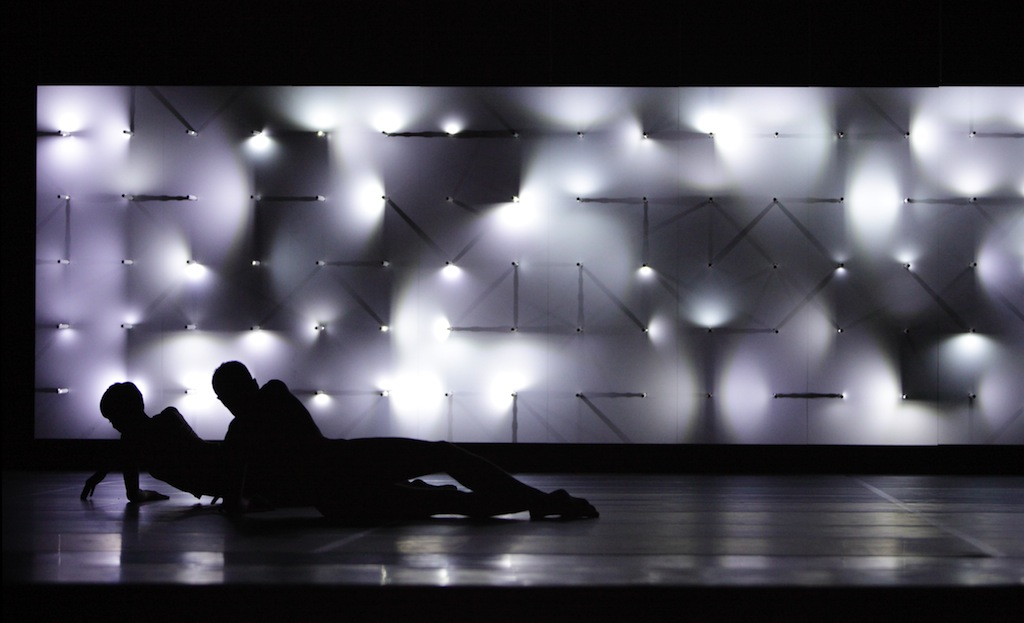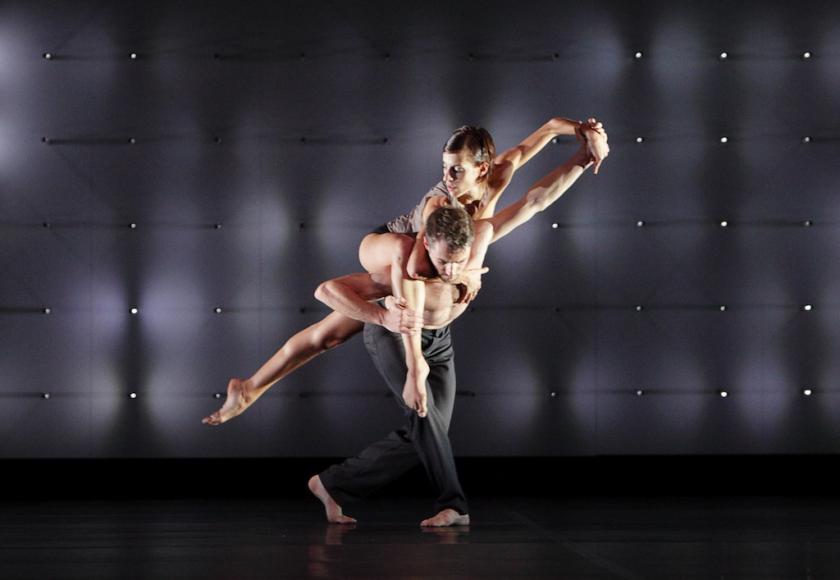Make no mistake; this is dancing of the highest order. The classically trained members of Wayne McGregor's company Random Dance demonstrate such exceptional mastery of technique that their movements should have one drooling in admiration. And since they wear little more than vests and pants for this production of FAR, every muscle in their perfectly honed bodies is visible as it tenses and releases, flexes and extends. Rather than being entranced by the beauty and fluency of their limbs, though, I found myself watching with cool dispassion. And soon, I realized I was thinking of the dancers primarily as anatomical specimens.
I was reminded of the anatomy lectures I sat through. Wearing only a G-string a model stood on the desk of the lecture theatre flexing the muscle indicated with a stick by the lecturer. It seemed demeaning for a man to be treated as an object for the edification of us art students, since being seen as nothing but a body is the ultimate indignity. In his painting The Anatomy Lesson of 1632, Rembrandt shows a cluster of medical men huddled over the corpse of a convicted criminal; the final indignity heaped on the executed man was to be dismembered in front of an audience.
 Why did such thoughts come to mind while watching FAR? Was it because the dancers were being put through their paces for our pleasure? Such associations seem especially ironic, given that FAR is named after Flesh in the Age of Reason, the book that inspired the production. Written by Roy Porter, it explains how advances made in the study of human anatomy in the century after Rembrandt not only produced greater understanding of the body, but also encouraged speculation about the relationship between mind and body.
Why did such thoughts come to mind while watching FAR? Was it because the dancers were being put through their paces for our pleasure? Such associations seem especially ironic, given that FAR is named after Flesh in the Age of Reason, the book that inspired the production. Written by Roy Porter, it explains how advances made in the study of human anatomy in the century after Rembrandt not only produced greater understanding of the body, but also encouraged speculation about the relationship between mind and body.
It's a topic dear to McGregor’s heart, one that he has been exploring with cognitive scientists in the Experimental Psychology Department of Cambridge University. His findings will increasingly, he hopes, produce what one might call “intelligent dance”, choreography that engages the minds as well as the bodies of the dancers. "In classical ballet and modern dance", he explains, “technique is still focused on physical training to the point of perfection. People concern themselves with virtuosity and controlling the body; the mind is essentially ignored. I completely reject this separation of mind and body.”
How far though, in FAR, are the dancers’ minds genuinely engaged? As I watched rubber limbed solos, fractious duets and perfectly timed ensemble routines, and saw yet another ripple undulate through a torso or another leg extend up past an ear, I was remarkably unmoved. Instead of being seduced by this exceptional physical grace, I found my mind wandering. I thought of the sequential photographs taken by Edweard Muybridge in the 1870s to analyse the motion of a jumping man or a dancing woman. The trim bodies of the young dancers reminded me of marionettes and the wooden lay figures used by artists to establish a pose.
The pin pricks of cold white light that sizzle and fizz on the LED board behind the dancers doesn’t help one’s concentration. It's exciting the first time Lucy Carter’s installation flashes into an apocalyptic frenzy, but novelty soon turns into tedium as numbers like those indicating your turn at the post office count the passing moments. It's not the countdown to Armageddon, though, just a symptom of ongoing alienation, and one’s feelings of dissociation are intensified by the rasps, groans, wheezes and squeals of Ben Frost’s electronic score and its unlovely discord.
 His soundtrack affected my enjoyment of the dance more than I could have anticipated. At one point the electronic noise stops, while two men dance a duet and a woman sings “In flesh, in blood/ Lay the self and its articulations/ With its own elaborate sign language gesture and feeling/ In flesh and in blood/ Lay the self and its articulations/ The dancing partner/ The dancing partner”. Maybe it's the sound of the human voice, maybe the lyrics, maybe the slower and more contemplative movement, but for the first time, empathy seems to be on the agenda – the dancers seem to be exploring human interaction in terms of feeling as well as physical exertion. But the moment passes and soon we appear to have entered the realm of anthropology and a study of group co-operation.
His soundtrack affected my enjoyment of the dance more than I could have anticipated. At one point the electronic noise stops, while two men dance a duet and a woman sings “In flesh, in blood/ Lay the self and its articulations/ With its own elaborate sign language gesture and feeling/ In flesh and in blood/ Lay the self and its articulations/ The dancing partner/ The dancing partner”. Maybe it's the sound of the human voice, maybe the lyrics, maybe the slower and more contemplative movement, but for the first time, empathy seems to be on the agenda – the dancers seem to be exploring human interaction in terms of feeling as well as physical exertion. But the moment passes and soon we appear to have entered the realm of anthropology and a study of group co-operation.
McGregor’s FAR engages the brain alright, but I suspect that it's his brain rather than that of the dancers. He has even said, “I use the dancers as objects to think with"; and it shows. May I suggest that, having focused on the brain, next he tries exhuming the heart?














Add comment